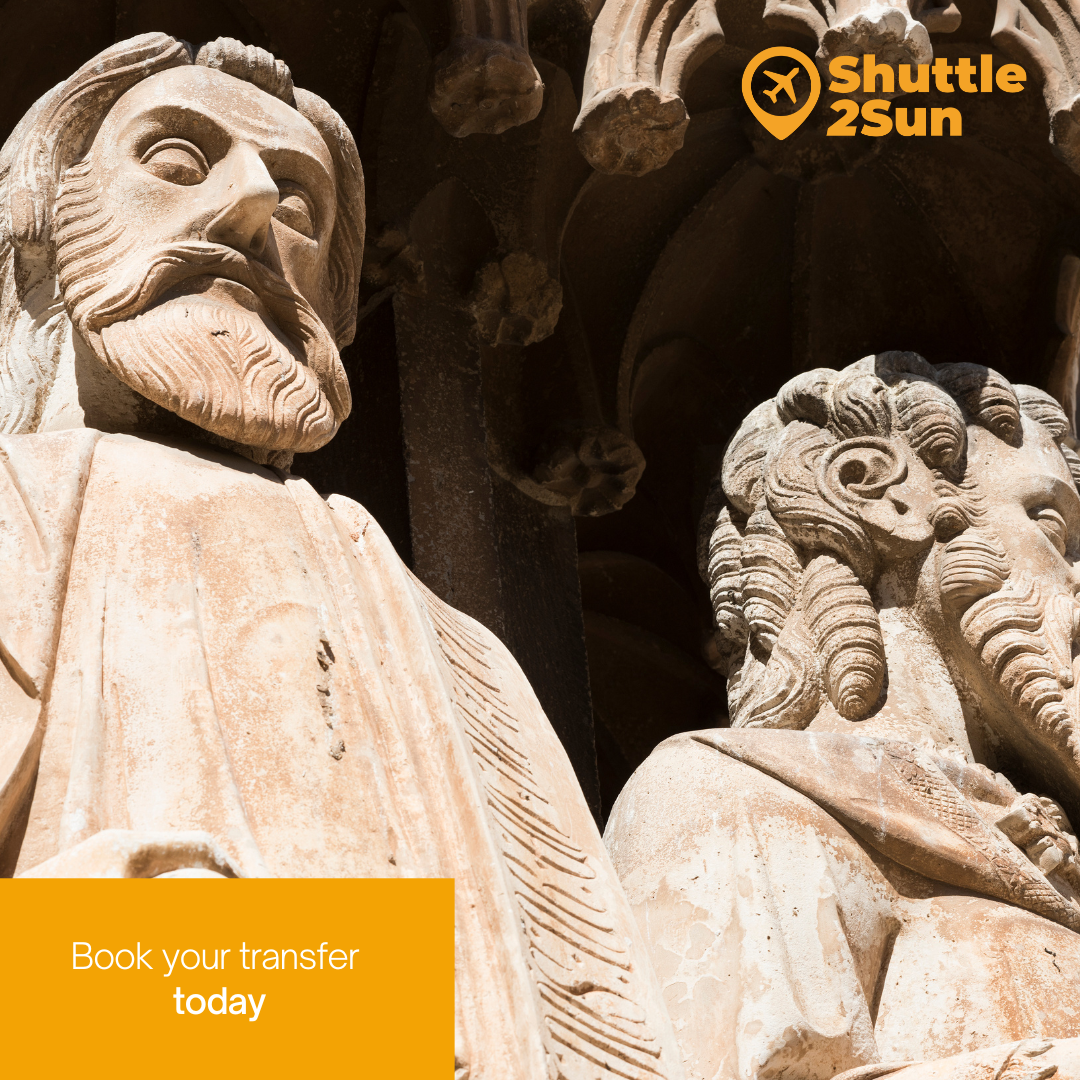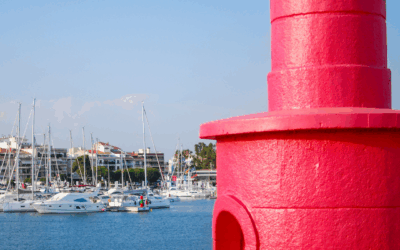Majestic and silent, Tarragona Cathedral crowns the upper part of the city as a millennia-old witness to history, art, and spirituality. Its imposing silhouette encapsulates centuries of transformation, with legends hidden among capitals and sculptures that seem to come to life at sunset.
Behind its walls, Romanesque and Gothic influences, medieval symbolism, and unique elements intertwine, making this building a true jewel of Catalan heritage. Every detail, from the arrangement of light in its naves to the figures carved on the façade, reveals an intention, a story, a message from the past.
In this article, we delve into its lesser-known secrets and uncover curiosities that often escape the visitor’s gaze. Get to Tarragona with Shuttle2Sun‘s low-cost and sustainable shared transfer services and private transfer services from Barcelona Airport, Barcelona Port, Reus Airport, Girona Airport and Camp de Tarragona AVE train station.
A Façade That Speaks Through the Centuries
The main façade of Tarragona Cathedral is a veritable history lesson carved in stone. Begun in the 12th century and completed in the 14th century, its structure reflects the transition between Romanesque and Gothic, two styles that coexist in harmony and contrast in this imposing façade. What at first glance might seem like a solemn decorative composition is in fact a symbolism-laden ensemble, with elements that spark the curiosity of the most attentive visitors.
The Largest Rose Window in Catalonia
One of the most striking features of this façade is its magnificent rose window, considered the largest in Catalonia. With a diameter of more than 11 metres, this circular stained-glass window lets in light, illuminating the interior of the temple throughout the day. Interestingly, this rose window is not perfectly aligned with the portal’s axis—a deliberate decision made for visual perspective.
The Apostles, by Different Artists
On either side of the central portal are the twelve apostles, sculpted with surprising expressiveness. Interestingly, these figures were not sculpted by a single artist but by several different craftsmen. The variety in the folds of the clothing, the proportions of the faces and the posture of the hands reveal personal styles within the same choral work, turning these apostles into an open-air museum of medieval sculpture.

Mullion of the Cathedral
In the mullion of the main portal stands the Virgin of Mainell holding the Christ Child, in Gothic style, the work of Jaume Cascalls and Jordi de Déu, which contrasts with the rest of the Romanesque-style sculptures, which are much more rigid and lacking in movement.
Remember that with Shuttle2Sun‘s low-cost and sustainable shared transfer services and private transfer services, you can travel to Tarragona from Barcelona Airport, Barcelona Port, Reus Airport, Girona Airport and Camp de Tarragona AVE train station.
The Organ Doors: a Renaissance Masterpiece
Among the most unique elements of the interior of Tarragona Cathedral are the organ doors, a little-known artistic gem that hides a fascinating history. These doors, usually kept closed, were painted in the 16th century by Pietro Paolo de Montalbergo, an Italian Renaissance painter who worked in the city, known in Catalonia as Pere Pau, and the artist Pere Serafí.

The work, executed between 1563 and 1564, is considered one of the finest examples of Renaissance painting in Catalonia. The doors show the Archangel Gabriel and the Virgin Mary on the outside, while on the reverse we find the birth and resurrection of Christ.
The Relic of Saint Tecla’s Arm
One of the greatest treasures is kept in the spiritual heart of Tarragona Cathedral: the relic of Saint Tecla’s arm, patron saint of the city. This relic arrived in Tarragona in 1321, in the middle of the Middle Ages, and since then it has been the object of profound popular devotion and the undisputed star of the religious and festive celebrations that honour the saint every September. According to tradition, Saint Tecla’s incorrupt arm was brought from Armenia to Tarragona.
The 19 Bells of the Cathedral
The bell tower of Tarragona Cathedral, visible from many points in the city, houses an exceptional set of 19 bells, each with its own name, particular history and specific function within the liturgical and civil calendar.
The oldest date back to the 13th century, while others were added between the 17th and 19th centuries. Among them is Capona, the largest and most emblematic bell, whose deep sound has marked the most solemn moments for centuries.
The Curious Procession of Rats in the Cathedral
One of the capitals of Tarragona Cathedral is carved with a surprising scene, the procession of the rats: a litter carrying a corpse, surrounded by tiny rats, in a peculiar depiction often referred to as a ‘funeral procession for cats’. This image, dating from around the 12th century, hides a legend that is as amusing as it is curious. According to tradition, a nobleman from Tarragona suffered such a brutal plague that a cunning cat devised a plan: to pretend to be dead so that the rats would carry him away. When they were off guard, the cat revived and killed them. Moved, the nobleman ordered a celebration in honour of the cat’s feat.
The Path of Light: A New Immersive Night-Time Experience
This summer, from the 24th of July to the 7th of September, Tarragona Cathedral will be decked out in all its finery with The Path of Light, a unique night-time experience that combines light, music and architecture in a sensory tour of its interior. The event features artistic projections on centuries-old stonework with a soundtrack designed to amplify the emotion of the visit.
Discover Tarragona Cathedral in depth! Remember that you can reach the city with the shared transfer services and private transfer services offered by Shuttle2Sun, which are low-cost and sustainable, from Barcelona Airport, Barcelona Port, Reus Airport, Girona Airport and Camp de Tarragona AVE train station.



